The second-largest state in the US, Texas, is known for its fair share of storms, temperature extremes, and drought. Among the harsh weather that doesn’t support the growth of a lot of trees, the state also has regulations against watering or irrigation and these make landscaping and gardening in Texas a challenge.
It is important to plant trees more tolerant to drought conditions for a healthier landscape. Here are my top 7 picks for the best drought-tolerant trees to plant in Texas.
- Texas Live Oak
- Texas Ash
- Cedar Elm
- Southern Magnolia
- Bald Cypress
- Bigtooth Maple
- Bur Oak
As a gardening enthusiast in Texas, you should ignore plants that aren’t adapted to survive dry conditions as they most often don’t live through periods of drought. You should not ignore the water use restrictions during a drought; the already dry soil tells you that moisture-loving plants won’t get what they need from the ground.
#1. Texas Live Oak
Botanical name: Quercus fusiformis
Max height at maturity: 20- 50 feet
Max canopy spread: 25- 60 feet
Growth Rate: 2.5 feet per year
Drought Tolerance: Extreme
LifeSpan: 200 years
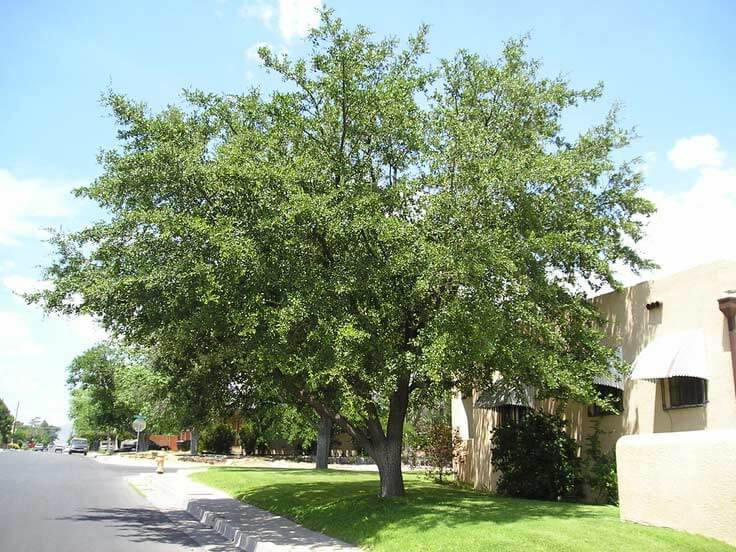
Live Oaks are large trees that are commonly around 50 ft tall and 60 feet wide with a growth rate of 2.5 feet per year. They have a short, stout trunk that casts a massive amount of canopy to create shade against the Texas heat.
Their wood is very hardy making the tree easy to protect from stress. Live Oaks are some of the most popular and well-known landscape trees in Texas.
Live Oak trees shed their leaves every year in the spring which are quickly followed by new leaves giving them an evergreen appearance. Live Oak trees are amazingly adapted to drought and grow best on clay loams.
#2. Texas Ash
Botanical name: Fraxinus texensis
Max height at maturity: 50 feet
Max canopy spread: 40 feet
Growth Rate: 2.5 feet per year
Drought Tolerance: Extreme
LifeSpan: 175 years
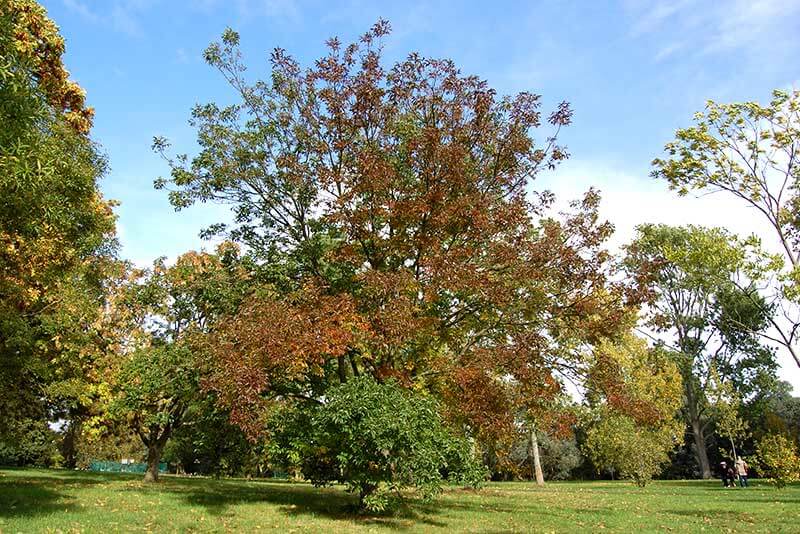
The Texas Ash is a drought-tolerant species with dark-green leaves. In the fall it has yellow shades on the inside and red on the outside. This species thrives in north-central Texas as well as in southern Oklahoma.
This tree can adapt to well-drained limestone soil. It’s hardy and resistant to disease and pests. It grows up to about 40- 60 feet in height and about 35 feet spread at maturity. Texas ash has a lifespan of 175 years.
#3. Cedar Elm
Botanical name: Ulmus crassifolia
Max height at maturity: 50- 90 feet
Max canopy spread: 40 – 60 feet
Growth Rate: 1 – 2 feet per year
Drought Tolerance: High
LifeSpan: 100 years
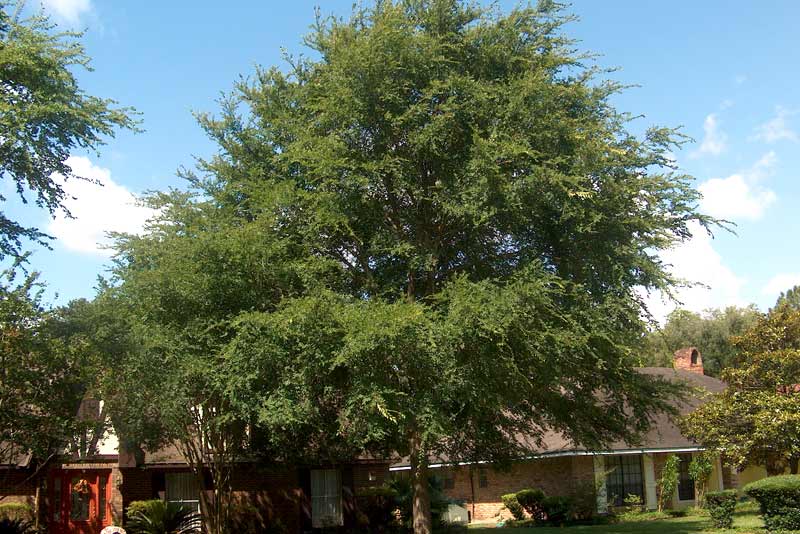
Cedar Elms are seen as the most common elm trees in Texas next to American Elms and are widespread throughout East, South, and Central Texas. They are large oval-rounded trees growing 50 -90 ft. high and 40-60 ft. wide.
Their bark is scaly and the drooping branches have corky ridges. They have dark-green leaves which are much smaller than those of the American Elm and are rough-textured.
Cedar Elms can typically grow in many kinds of soils which also makes them very popular in other arid environments like Arizona, Utah, and California. They are also very drought tolerant and cast a very nice shade to fight the Texas heat. Fall foliage is yellow except in the southern part of the range where it is evergreen.
#4. Southern Magnolia
Botanical name: Magnolia grandiflora
Max height at maturity: 80 feet
Max canopy spread: 30 – 40 feet
Growth Rate: 1 – 2 feet per year
Drought Tolerance: High
LifeSpan: 80 – 120 years
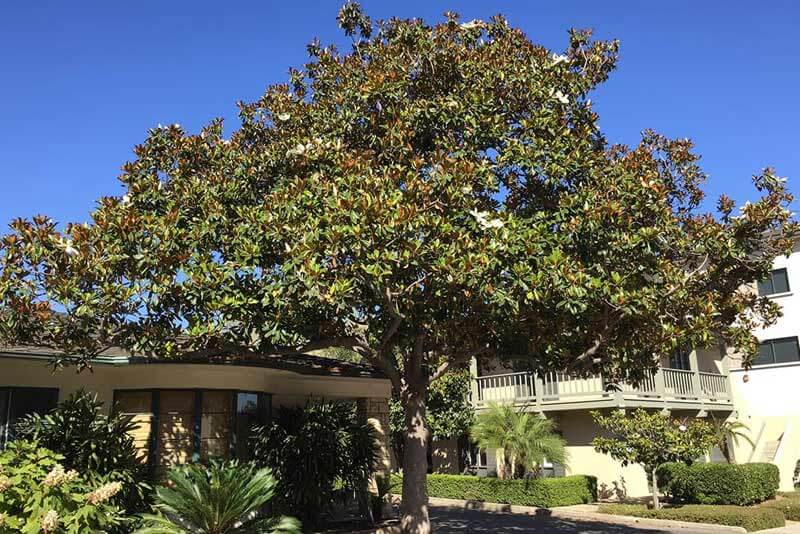
Magnolias are commonly known as “southern” trees and strive well in the more Eastern part of Texas. They have large, waxy, fragrant white flowers and large glossy, dark green, leathery leaves that appeal to the eye. Magnolias typically prefer full sun which is readily provided by Texas and require deep well-drained soils to perform the best.
These trees grow to a height of 80 feet (24 tall with a spread of some 40 feet at maturity. The tree has a growth rate of about 1 to 2 feet per year.
Best drought-tolerant trees for North Texas
#5. Bald Cypress
Botanical name: Taxodium distichum
Max height at maturity: 60 -70 feet
Max canopy spread: 25 feet
Growth Rate: 1 – 2 feet per year
Drought Tolerance: Moderate
LifeSpan: 1000 years
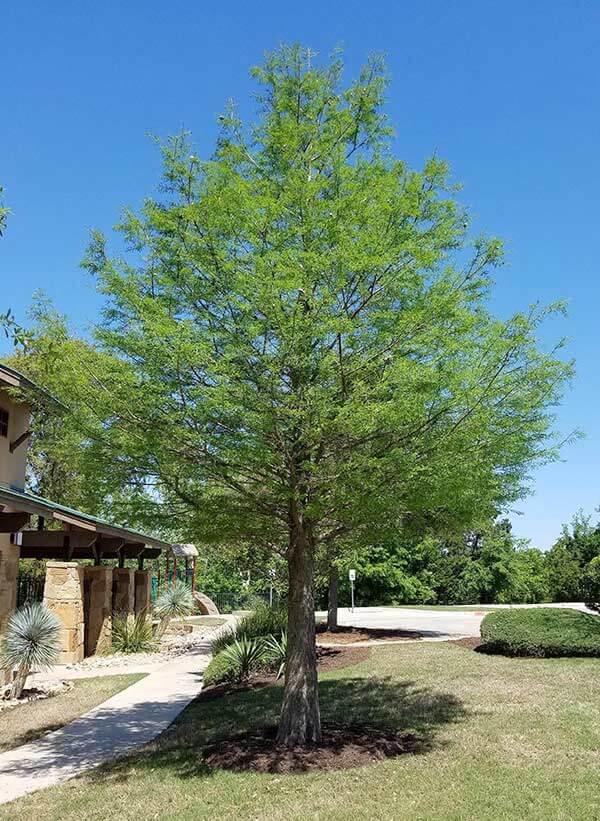
This deciduous tree is perfect for “drying out” drainage or other areas that are naturally wet. It is the classic tree of southern swamps. This tree dwells in swamps because it out-competes most other trees on such sites.
Surprisingly, they can also withstand those poorly drained areas more than most trees. The bald cypress does quite well when planted in the right soil in yards of Texas or along streets and is a beautiful specimen tree. They can be used for shade and have a very defined pyramidal shape with feather-like leaves that make them more aesthetically pleasing.
#6. Bigtooth Maple
Botanical name: Acer grandidentatum
Max height at maturity: 50 feet
Max canopy spread: 25 feet
Growth Rate: 1 – 2 feet per year
Drought Tolerance: High
LifeSpan: 1000 years
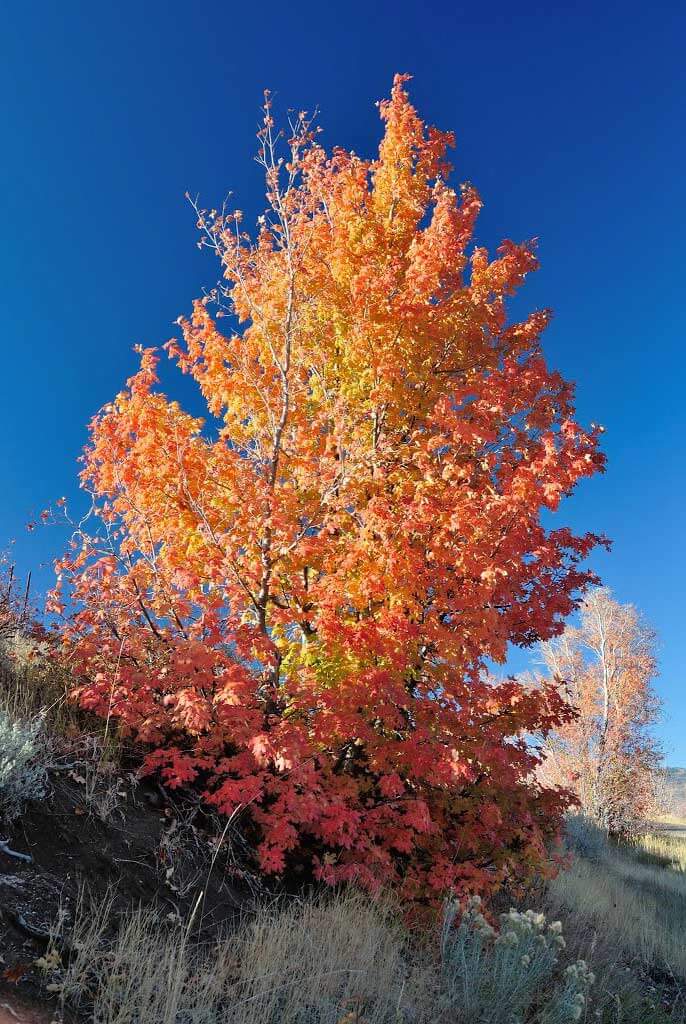
This fast-growing deciduous tree sports outstanding red and orange fall colors. A shrubby or somewhat tree-like maple, the Big Maple tree usually matures at 10-15 ft or sometimes taller. Its bark is dark brown and scaly and its branches are stout and erect.
The thickish, three- to five-lobed deciduous leaves turn bright red and gold in the fall. It is a small to medium-sized tree with a short trunk and spreading, rounded, dense crown; often a shrub. It has great drought-tolerant tendencies and is native to Texas.
#7. Bur Oak
Botanical name: Quercus macrocarpa
Max height at maturity: 130 feet
Max canopy spread: 70 – 80 feet
Growth Rate: 1 foot per year
Drought Tolerance: Extreme
LifeSpan: 200- 300 years
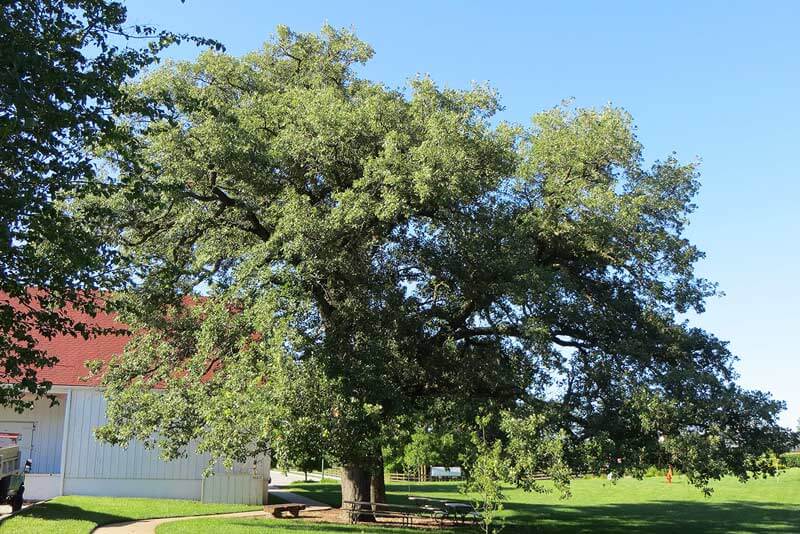
Bur Oaks are large-stature trees native to Texas. They have large leaves and enormous acorns that puzzle artistic interests in people. Its great adaptability makes it an excellent choice for the Texas environment, as it can adapt to cold and extreme heat.
Bur Oaks have a long taproot, making them very drought tolerant and thrive well with a small amount of water. Bur Oak grows into a large and rounded tree at maturity with a height of 70 to 80 feet and a spread of around 80 feet.
Need professional help?
If you’d rather have professional help with planting and you are in need of a tree service company you can trust, we are here to help. The fastest and easiest way is to get 3 Estimates from the most affordable tree services near you by using this FREE service.
GoTreeQuotes.com quickly matches you with the 3 tree surgeons voted #1 by previous users in your area.
- Scroll up to the top of the page and enter your ZIP Code in the blue form at the top.
- Give us a few details about your tree planting job, plus some contact information.
- Your tree details are forwarded to the closest three tree services, all voted best priced, who will also price your tree job.
For general pricing information for tree removal in Texas, see our complete guide here.












